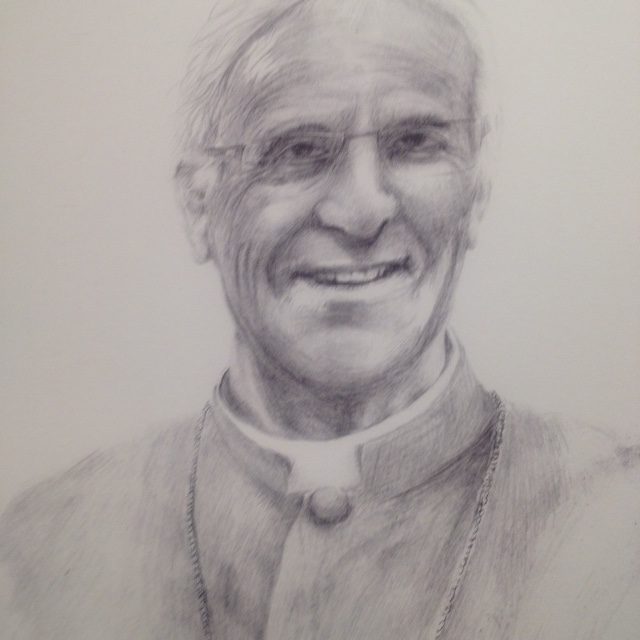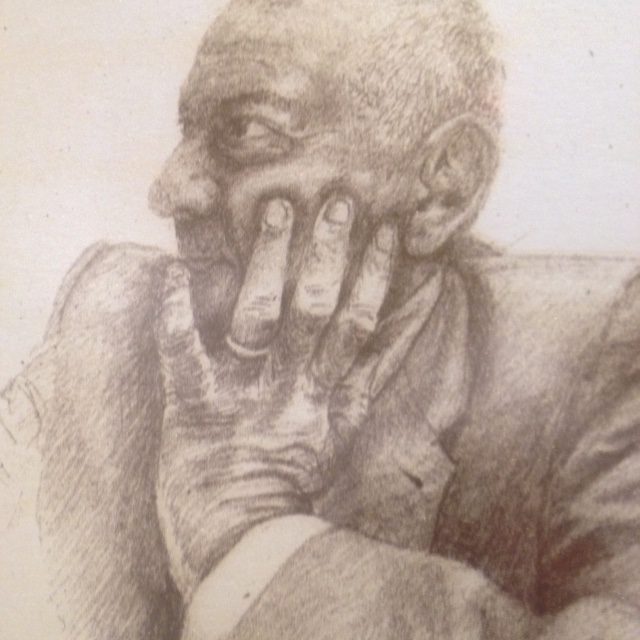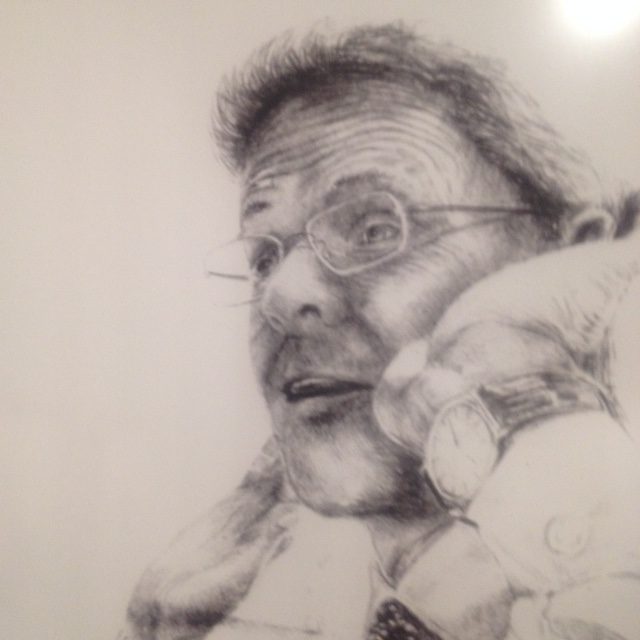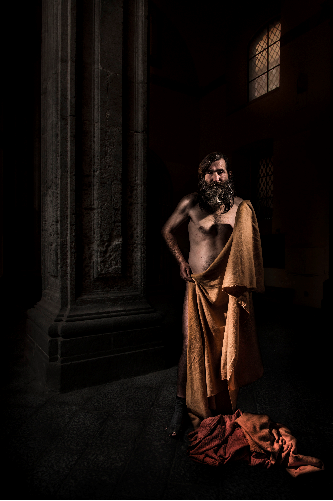Poet Pauline Bailey
Richard Lutz reviews his seven days…this week in and out of museums.
Interesting that printmaker Jonnie Turpie calls his exhibition Printed Portraits. His silkscreens are, admittedly, the faces of the people of Birmingham that he has knocked into during his year as the honorary High Sheriff of the West Midlands. In a way, a visual diary of his role. But it is sometimes not the faces that he hones in on, such as this of the Bishop of Birmingham, David Urquhart.

But the hands too, such as this of Punch Records boss Ammo Talwar as fingers prop up the chin.

Or this one of newly-elected mayor Andy Street as the hands help the ears.

Many of his pictures, which combine expertise in digital and analogue print techniques, add a hint of colour, such as with Birmingham poet Amerah Saleh….

And some, like that of poet Pauline Bailey (top of article) simply shows life reflected in a pair of intriguing shades. As you wander through his single room exhibition, which runs until 2nd July, you keep seeing those hands and fingers, fingers of famous folks, hands of the little lady from Walsall or the noted professor…. sometimes pointing upwards, sometimes holding a phone, sometimes enfolding a book.
Turpie, also known as a former head honcho of Maverick TV and now as chair of the Midlands Arts Centre, says he tried to capture a wide range of folks. And this he does. He continues his print work as artist in residence at The School of Art in Margaret Street.
 His show is in stark contrast to a photographic exhibit sadly just ended across the city at The Barber Institute. It is the work of Italian artist Attilio Fiumarella. He has taken Carravegio’s Seven Works of Mercy paintings and re-created using street people from Porto. The prostitues and homeless of this Portuguese city are his models.
His show is in stark contrast to a photographic exhibit sadly just ended across the city at The Barber Institute. It is the work of Italian artist Attilio Fiumarella. He has taken Carravegio’s Seven Works of Mercy paintings and re-created using street people from Porto. The prostitues and homeless of this Portuguese city are his models.
They are haggard, some beaten by life and strife, some strong and austere. But each has a vulnerability scorched into bodies, naked and semi naked bodies, worn and tired >Both exhibits show more than photographic portraits. They show the strength of the ordinary and the strength of the downtrodden.



